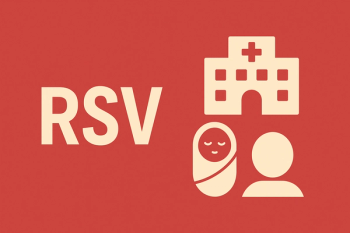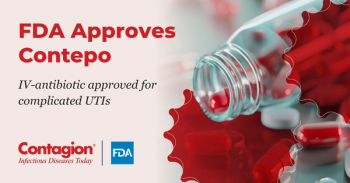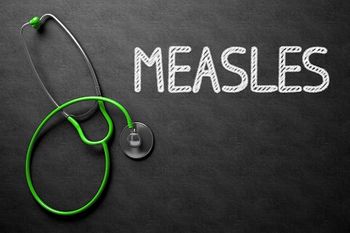
Separating Fact from Fiction: 7 Controversies Surrounding PrEP
At CROI 2018, Dr. Linda-Gail Bekker highlighted 7 controversies surrounding PrEP and provided conference attendees with enough evidence to separate fact from fiction.
Despite the fact that pre-exposure prophylaxis (PrEP) is known to provide a high level of protection against HIV infection in those at risk, aspects of its use remain controversial. The continued debates regarding the preventive tool pose challenges for associated scale-up efforts.
One thing is not debatable, however. When drug levels in the blood are high, PrEP offers elevated and consistent protection against HIV.
In a symposium at the
Controversy #1: Does PrEP actually work for women from Africa?
“It’s compelling; in 2016, there were 900,000 adult infections in women, a good number of them from Africa,” Dr. Bekker said. “But still, we worry that PrEP doesn’t work in women, or indeed, that women seemingly don’t want PrEP.”
This uncertainty may have stemmed from a handful of randomized control trials (Fem_Prep and Voice) which showed disturbingly low results were achieved when it came to adherence. “The striking thing about the studies Voice and Fem-PrEP was that approximately half of the women never had TDF detection in their plasma,” she said. “And few of them, a quarter of the women, had tenofovir detected in all samples.”
A subsequent paper addressed the many complex reasons behind why the women in those trials were nonadherent. The biggest reasons centered on community, peer, and partner disagreement, but others included stigma, low risk perception, the large pill size, and concern about the investigational drug and its side effects. “Not listed there is that they did not want PrEP,” Dr. Bekker stressed. “Instead, there were many compelling reasons why women may not have been able to participate in taking the PrEP the whole [duration] of the clinical trials.”
Indeed, an open-label trial, ADAPT HVTN 067, which assessed PrEP use in women, found that the majority of women took oral PrEP when it was made available to them.
Another controversial idea that has been floating around is that perhaps PrEP doesn’t work in women. “Is it because we’ve done the studies where viral clade C may be having an impact or is it the tissue penetration? What about the viral load or the partner?” Dr. Bekker asked conference attendees. What about the role of vaginal dysbiosis and concomitant sexually transmitted infections (STIs)? It has been shown that Gardnerella in the microbiome is capable of metabolizing tenofovir before drug uptake by target cells. “What about the penetration of oral antiretrovirals into mucosal surfaces?” she questioned. “The female genital tract does pose a challenge in that regard and we don’t see as good penetration of those drugs in those tissues.”
Controversy #2: How long does it take before PrEP actually works?
“There seem to be 2 schools of thought,” Dr. Bekker shared. “[One that thinks that it’s effective] within a week, and the other [that thinks] we have to wait about 1 month before we get any effect.”
What is certain is that once an individual is exposed to HIV, the time to act is short. Post-exposure prophylaxis (PEP) must be initiated between 24 and 36 hours of exposure; 48 hours could be too late.
But, what about PrEP? Past research conducted using macaque models found the longest time before PrEP became effective was 7 days; however, it could be as quickly as 2 hours.
An open-label study conducted in Cape Town assessed what kind of dosing would be more acceptable to women as well as how long it would take before basic coverage would be seen. The investigators found that, “daily dosing resulted in better adherence with higher drug levels and better coverage of sex acts,” Dr. Bekker explained. “Our conclusion was that daily dosing may foster a better habit formation in women at any rate, so I think our indication that women should go with daily, seems to be both a preferred as well as a required indication.”
Controversy #3: Is PrEP unsafe during pregnancy?
“This is very important for partners of HIV-positive people who wish to conceive or an HIV-negative woman who becomes pregnant but remains at high-risk of contracting HIV during pregnancy and breastfeeding,” Dr. Bekker explained.
We know that HIV risk is high in women who are pregnant. Furthermore, a recent meta-analysis found that that the odds ratio of mother-to-child transmission of the infection is also high. What kind of impact does PrEP have when it comes to conceiving? “In China, there’s a 5-fold increase in odds of seroconversion in those desiring to conceive a child, and in Kenya, there is an almost 2-fold relative risk of seroconversion,” she said.
However, in a Swiss study looking at 46 discordant couples, 75% achieved natural conception while using PrEP; none of the couples seroconverted for HIV. Furthermore, in the Partners PrEP study, PrEP was not found to reduce the effectiveness of hormonal contraceptives in preventing pregnancy. “It was concluded that PrEP is safe to use in conjunction with hormonal birth control,” she said.
What about the safety of tenofovir in those who are pregnant? Several studies have sought to explore this, but more research is definitely needed; however, there have been enough studies on the topic for the World Health Organization (WHO) to recommend that PrEP be offered and continued during pregnancy in women who are at substantial risk for HIV infection.
Additionally, evidence suggests that oral PrEP is safe for women not infected with HIV who are breastfeeding; the transfer of tenofovir to breast milk is limited, according to Dr. Bekker.
Controversy #4: Is PrEP a good option for adolescents?
The use of PrEP in adolescents is a controversial subject as some individuals believe that although PrEP is a good preventive option for adults, it may not be the best choice for younger individuals. “I’ll remind you that in the last year or so, well over 500,000 people who were infected with HIV were between the ages of 15 and 24; almost 2,000 young women are infected in South Africa every single week,” stressed Dr. Bekker.
Investigators need a better understanding of the role of PrEP in this population; however, according to Dr. Bekker, past evidence has shown that it is the aspect of a preventive tool that this population struggles with, not the pill. For example, 1 randomized control trial on PrEP via the use of a vaginal ring found that those between 18 and 21 years of age struggled to use the product effectively; greater efficacy was noted in those 22 years of age or older. Conversely, different open-label studies found that adherence between those under 25 was similar to those over 25. “So, which is it?” questioned Dr. Bekker.
She highlighted the ATN113 study which looked at young men who have sex with men (MSM) in the United States. “An important message [from this study is that] the majority of the participants achieved protective drug levels, but [then] adherence fell off over time. [T]he point at which that happened was when the visits moved to 3-monthly intervals,” she shared. “So maybe, it’s not that they can’t use PrEP, but that these young people may need more support from us and they may need even virtual support to ensure that they are able to use this prevention modality.”
Dr. Bekker reminded conference attendees that this isn’t specific to MSM in the United States. Another study echoed similar sentiments, revealing that 15- to 19-year-olds had achieved good plasma levels in the study until visits moved, again, to 3-month intervals. According to Dr. Bekker, that means, “we need to reconsider that; it doesn’t mean that they have to come back to the site necessarily or the clinic, but they do need to be having contact with each other” to ensure that this doesn’t happen.
What it comes down to is that evidence suggests younger individuals need more support.
Controversy #5: PrEP is not a medical intervention; it’s a lifestyle choice.
According to Dr. Bekker, PrEP should be viewed as a lifestyle choice rather than a medical intervention. To illustrate her point, she mentioned what has happened with condom uptake. When condoms were considered a medical intervention, uptake was poor; but, when a small study conducted in Cape Town, South Africa, made condoms more interesting (such as bright neon colors and packaging), increased uptake among MSM was noted. “And so, I would argue that we need to think outside of the box for PrEP,” she stressed. “Let’s move out of the clinic; let’s try and make PrEP as accessible as we can. We can take the monitoring with us out of the clinics, via self-testing, etc., and we can make a difference.”
Something that Dr. Bekker was particularly passionate about was moving nucleic acid tests (NATs) for diagnosis into the south. This has yet to be done is due to cost, she said, and “I am ready to do some good old South African Toyi-Toyi around driving the cost of this NAT diagnostics down because this is what’s going to make the difference.”
Controversy #6: Does PrEP cause STIs?
The data on this topic has been mixed. One study that Dr. Bekker shared with attendees showed some increases in STIs among participants, but no HIV diagnoses. Yet another study she cited showed an increase in STIs but a clear decrease in HIV diagnoses.
An of this controversial topic is that the use of PrEP may lead to risky behavior. However, a systematic review showed that although STI rates were high in both treatment and placebo groups, there was no conclusive evidence to suggest that PrEP use correlated with increased sexual risk behavior. “It protects individuals who are prone to risk behaviors; PrEP shouldn’t exist outside of a package that does not include ‘the works;’ testing, contraception, condoms, STI screening, and treatment,” she said. “On the other hand, [the use of PrEP is important] because it brings people into these services.”
Controversy #7: PrEP is unaffordable.
A systematic review found that PrEP is potentially cost-effective when those at highest risk of exposure to the virus are prioritized; although, drug costs would limit cost-effectiveness, according to Dr. Bekker. Furthermore, prioritization of PrEP for young women in southern Africa can be cost-effective, especially when there are costly obstacles to recruiting HIV-positive individuals for treatment using the same drug.
In resource-limited settings, treatment pools could be bigger, and, therefore, a hard choice will sometimes need to be made: treatment or prevention? However, according to Dr. Bekker, focused PrEP and universal antiretroviral therapy is really the way to go. If PrEP is implemented at certain periods as a prevention intervention, it may result in reduced need for treatment and prevention later in life. “It’s not for life, so we do want to target, and I’m afraid we do need to target this group of 15- to 24-year-olds,” she said, “while they’re young and at risk.”
Although upwards of 200,000 individuals are on PrEP, a prevention gap remains. PrEP is a strong preventive option that is available today to protect individuals at risk of HIV from getting infected with a lifelong infection. “The benefit should be weighed against the risk and the benefit here may be averting up to 2 million new infections in this next year,” Dr. Bekker stressed.
According to Dr. Bekker, the medical community needs to remember:
- PrEP does work in women if taken daily;
- PrEP works for safer conception;
- The time for PrEP to start working ranges from 2 to 7 days;
- PrEP is a lifestyle choice more than it is a medication;
- PrEP does not cause STIs; and, lastly,
- PrEP is cost-effective when the cost of not using it is HIV.
Newsletter
Stay ahead of emerging infectious disease threats with expert insights and breaking research. Subscribe now to get updates delivered straight to your inbox.

































































































































































































































































































